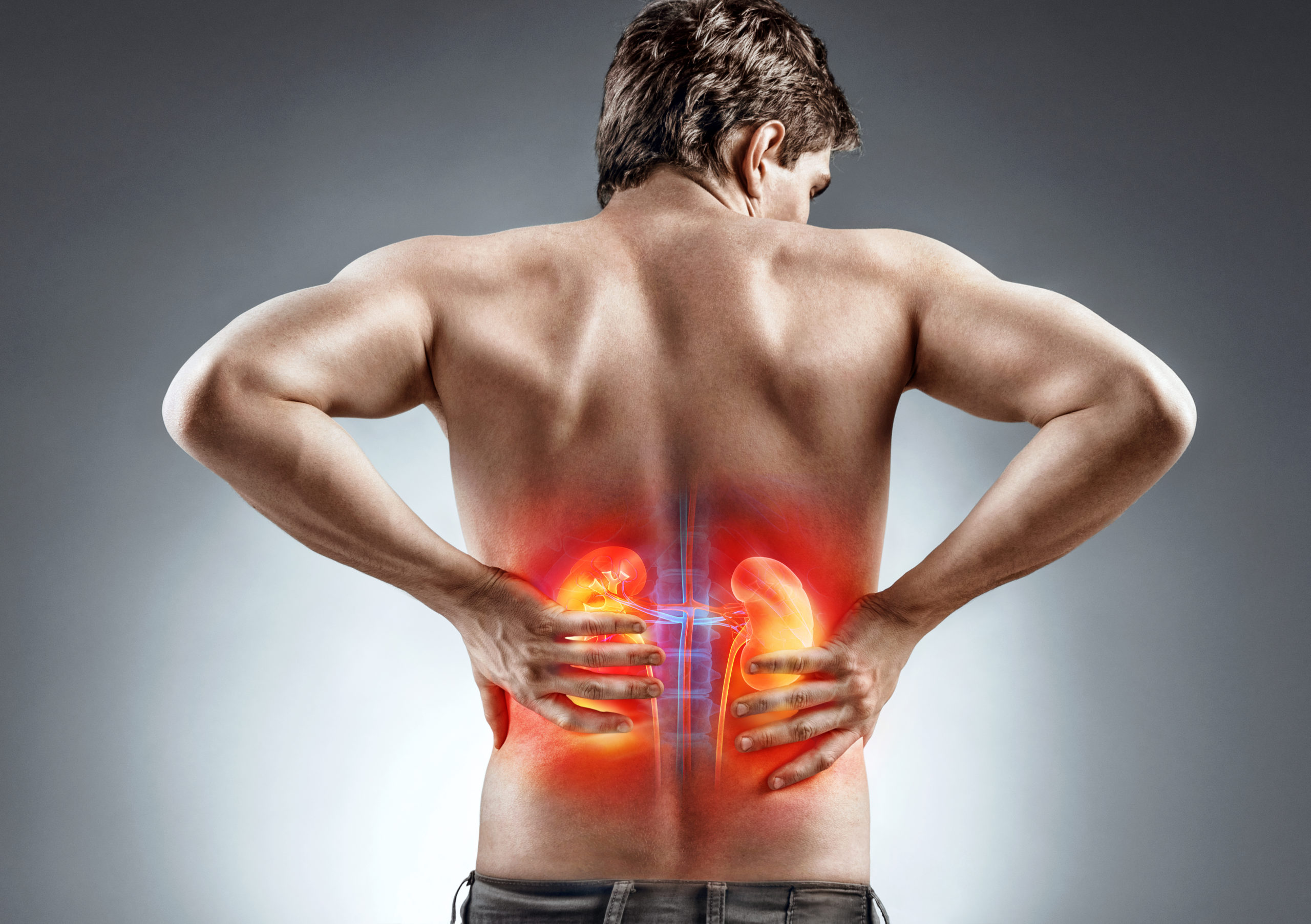 Verified By Dr P Satya Vamseedhar September 14, 2023
Verified By Dr P Satya Vamseedhar September 14, 2023

Your body has two kidneys. Each kidney lies at the back of the body between your lower ribs and hips. The human kidneys are in the shape of beans. The size of each kidney is equal to the size of a fist.
Your kidneys are responsible for filtering the waste out of your body. They produce urine and remove the extra fluid and waste from your body.
Kidney pain is not common. It indicates that something is wrong with your kidney and may happen with one or both kidneys.
Kidney pain is usually felt in the body’s back, sides, or upper abdomen. However, pain in these areas may not necessarily be related to the kidneys. You then need to determine whether the pain is associated with kidneys or not. Unlike back pain that usually happens in the lower back, kidney pain is deeper and higher up the back as they are underneath the ribcage, on either side of the spine. Kidney pain is felt in sides, or in the middle to the upper back (mostly under the ribs, to the left or right of the spine)
Usually, kidney pain is a constant dull pain in one or both kidneys.
Generally, the pain develops in one kidney. If the condition affects both areas, you feel the pain on both sides.
Symptoms that may accompany kidney pain involve:
The causes of kidney pain may vary. They can be associated with parts connected to the urinary system like the ureters and bladder. However, kidney stones, kidney infections and kidney cancer are some dominant causes of kidney pain. The potential causes of kidney pain are as follows:
Before opting for any treatment options, it is vital to know the cause.
Kidney pain may indicate a serious health complication. You should visit a doctor if you experience constant pain in one or both kidneys.
Book an appointment on the same day if you feel any of the following symptoms:
Consult with a doctor as soon as possible so your treatment plan can be initiated before further complications.
.
Call 1860-500-1066 to book an appointment.
You can prevent kidney pain by keeping your kidneys healthy, below are some ways you can do so:
It is advisable to consult Nephrologist (Kidney specialist) as the underlying cause should be diagnosed.
You may not be able to cure kidney pain at home. But you can relieve the same with the following remedies:
The treatment options for kidney pain depend on its cause. Your doctor may suggest some tests to find out the cause.
Pain in the kidney indicates the unhealthy state of your kidney. It may occur in one or both kidneys. There can be a number of causes that lead to kidney pain. If you observe any symptoms related to kidney pain, book an appointment to prevent complications.
Frequently Asked Questions (FAQs)
Doctors diagnose kidney pain before starting the treatment. They may suggest one or more checkups in order to recognize the cause.
Kidney pain and back pain are not the same. However, many times it becomes tough to differentiate between the two. Unlike back pain that usually happen in the lower back, kidney pain is deeper and higher up the back as they are underneath the ribcage, on either side of the spine. Kidney pain is felt in sides, or in the middle to the upper back (mostly under the ribs, to the left or right of the spine)
Yes. Kidney pain requires immediate attention. If the condition that caused the kidney pain is not treated appropriately and on time, your kidneys may stop working, which is called kidney failure.
It is very important to consult a doctor immediately if your pain is severe and started suddenly.
Your kidney pain does not get worse by sitting but you may feel relief from pain while sitting. However, your kidney pain may get worse during changing positions. It can also get worse with sudden movements like sneezing.
MD, DM (CMC, VELLORE), NEPHROLOGY, Consultant Nephrologist, Apollo Hospitals, Health City, Vishakapatnam

October 25, 2024